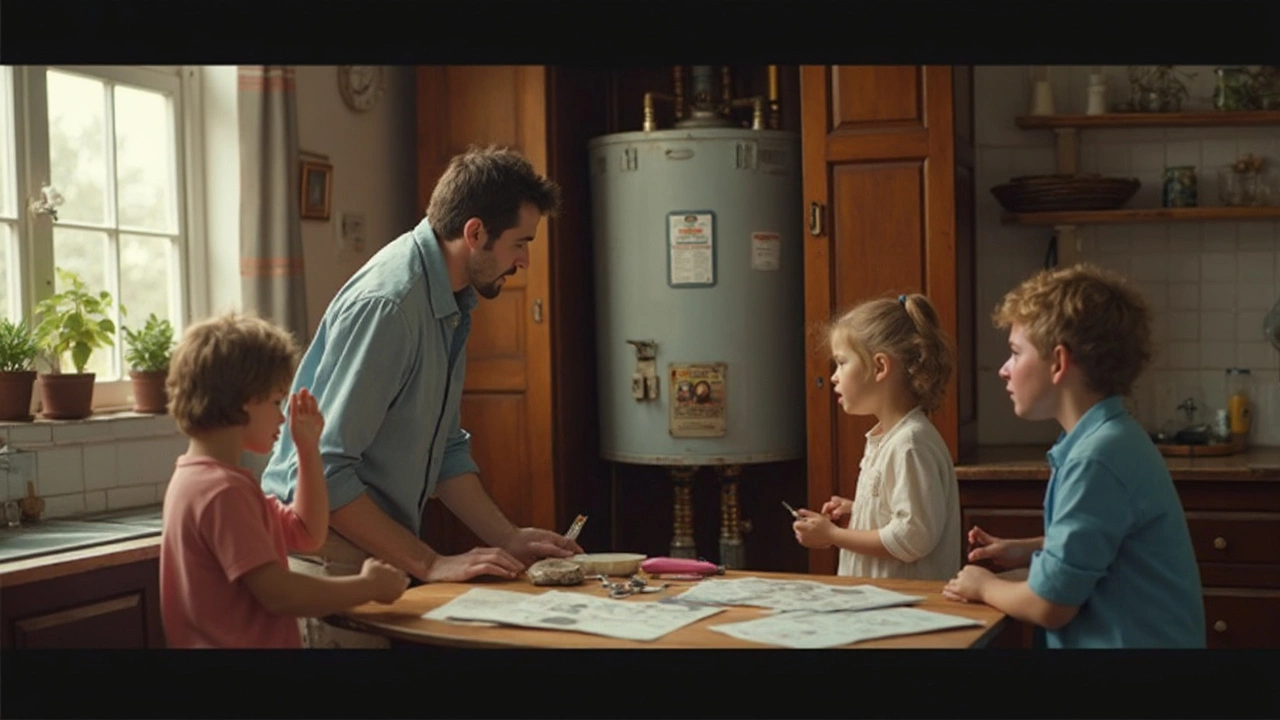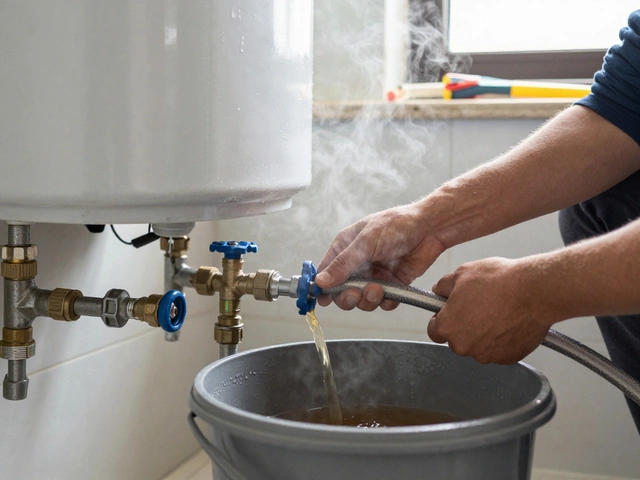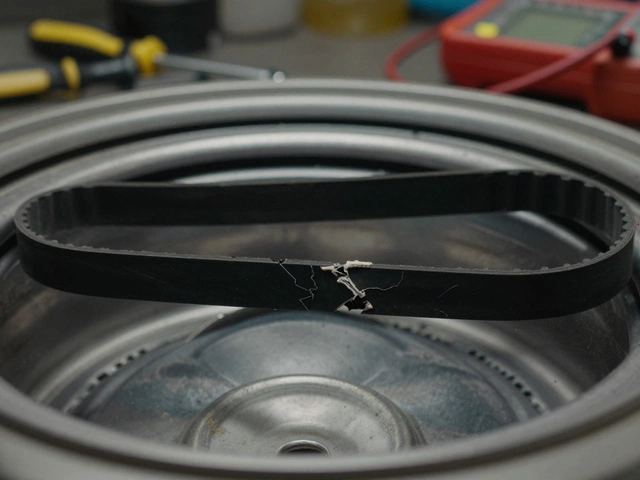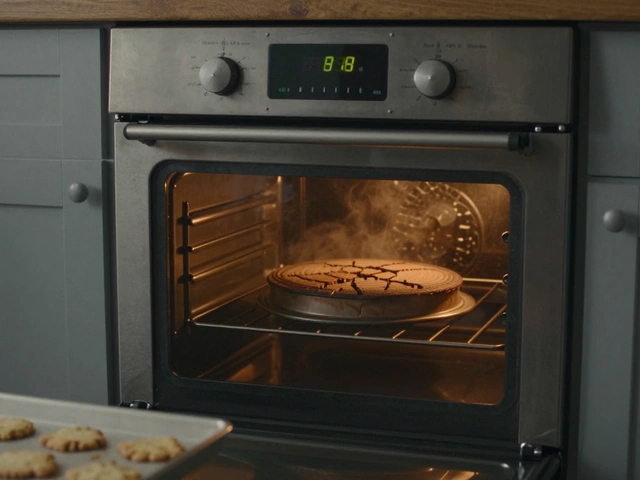Most folks don’t keep track of their water heater’s birthday. But when your shower suddenly runs cold on a Monday morning, that dusty metal tank in the basement climbs right to the top of your to-do list. If yours is pushing 20 years or more, you’re probably wondering if fixing it is even worth the hassle and cost.
Here’s the truth: water heaters aren’t built to last forever. The average gas or electric tank water heater calls it quits somewhere between 8 and 12 years—20 years is definitely senior citizen territory. Stretching it this long is like driving the family car on a donut tire for five extra years. Sure, it might still work, but you’re rolling the dice every time you turn on the hot tap.
- Why Does Age Matter for Water Heaters?
- What Problems Creep Up After 20 Years?
- Cost Breakdown: Repairing vs Replacing
- Hidden Risks and Safety Concerns
- When Is It Really Time to Replace?
Why Does Age Matter for Water Heaters?
Trusting a water heater after 20 years is like betting on your high school sneakers in a marathon—they’re bound to give out. These tanks put up with constant heat, pressure, and water flow. Inside, metal and water aren’t friends for long. Over the years, the steel tank is slowly eaten away by corrosion, even with protective coatings and a sacrificial anode rod fighting the fight. That’s why most manufacturers put the expected lifespan of a standard tank heater around 10 years.
A key reason age matters is efficiency. Old heaters don’t heat water as fast or with as little energy, so you’re paying more every month for slower hot water. Parts like the thermostat and heating element can wear out or get gummed up with mineral buildup. You may not notice right away, but your electric bill does.
Another biggie: safety. A failing tank can spring a leak or, in rare cases, burst. Water damage is brutal—it’ll ruin floors, walls, and leave you with a cleanup headache. Even smaller leaks are bad news, causing quiet rot and hidden mold.
When it comes to water heater repair, knowing the age helps you decide if a fix is a waste or a smart move. After two decades, you're pretty much on borrowed time, no matter how well you’ve cared for it. Not sure how old yours is? There’s usually a sticker with a serial number—search your model and you’ll find the year.
What Problems Creep Up After 20 Years?
Water heaters aren’t meant to last forever, and by 20 years, most units start showing more symptoms than a creaky old knee. The first thing to watch out for? Leaks. After so many years, the inner tank can rust out, letting water seep out onto the floor. Even tiny leaks can cause hidden water damage and mold—especially if your unit sits in a closet or basement corner no one checks too often.
Next up: sediment build-up. Over the years, minerals from hard water settle at the bottom of the tank. This crusty mess acts like a blanket on the heating element, making the heater work double time—leading to less hot water and sky-high bills. If you hear loud pops, bangs, or rumbling when the heater’s running, that’s probably the sediment shifting around inside.
Old heaters also mean worn out parts. Valves, thermostats, and heating elements don’t last that long. You might notice water just isn’t getting as hot as it used to, or that the temperature swings unpredictably from boiling to lukewarm. Age also makes the tank’s safety features less reliable. A faulty pressure relief valve can turn a water heater into a time bomb (no joke—a burst tank can flood a home in minutes).
There’s also corrosion. Ever checked your hot water and noticed it smelled metallic or looked a little rusty? That’s a sign the tank’s lining is breaking down, and rust from inside is showing up in your water. Not only is this gross, but it also means a major failure isn’t far off.
Here’s a quick snapshot of the most common headache-inducing problems after two decades:
- Leaks around the base or pipes
- Decreased hot water supply
- Rumbling or banging noises (sediment build-up)
- Rusty or smelly hot water
- Parts needing constant replacements
- Higher utility bills for the same amount of hot water
- Water heater repair visits are suddenly more frequent
If you like numbers, here’s a look at trouble rates for 20-year-old units:
| Problem | Chance by 20 Years |
|---|---|
| Leaks | Over 75% |
| Heating Element Failure | Nearly 70% |
| Corrosion | About 80% |
| Sediment Buildup | Almost 90% |
Bottom line: after 20 years, almost every water heater is running on borrowed time. If you’re seeing more than one of these problems, you’re not alone—it’s a sign your heater is just plain worn out.
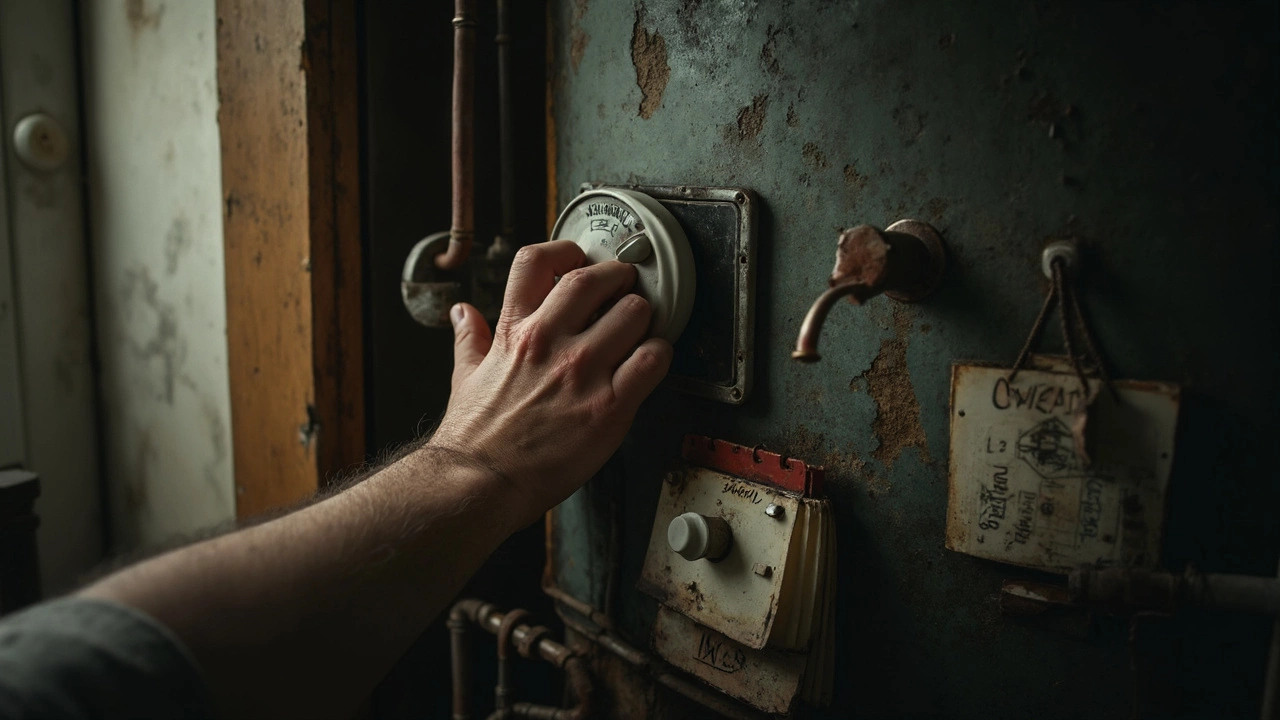
Cost Breakdown: Repairing vs Replacing
The moment your old water heater starts acting up, your wallet gets nervous. Repairing a 20-year-old unit sometimes feels like pouring money down the drain, but is it really?
Let’s look at the numbers. A typical repair—like replacing a thermostat or heating element—might set you back $150 to $350. More serious fixes like swapping a leaky tank often hit $500 or even more, which is where things get dicey. At 20 years old, every new part means another piece is that much closer to failing. Plus, a lot of plumbers charge extra for older units since parts are often harder to get, and some won’t touch a model that old at all.
| Cost Item | Average Repair | Replacement |
|---|---|---|
| Minor Repair (thermostat/element) | $150 - $350 | – |
| Major Repair (tank/leak) | $400 - $700 | – |
| Standard Tank Replacement | – | $1,000 - $1,600 (installed) |
| Energy Efficiency Upgrade | – | +$300 - $600 |
A new, basic tank-style water heater installed typically runs $1,000 to $1,600. If you want to switch to a tankless model or something high-efficiency, expect to tack on another few hundred bucks upfront, but you might save around $100 a year on energy for gas heaters, or around $40 for electric. The real question: are you willing to keep paying for repairs on something that could kick the bucket any minute?
One thing I learned after going a couple rounds with our old heater: repair costs stack up fast, and every visit from the plumber is a roll of the dice. If you're dealing with chronic leaks, weird noises, or rusty water, that’s your heater telling you its best days are behind it. Sometimes biting the bullet and getting a new one is actually cheaper in the long run.
- If repairs have cost you over $500 in the last year, look hard at replacement.
- If you spot water near the base or notice rusty water from your faucets, replacement is a safer bet.
- Older units are less efficient—new models can knock 10-20% off your water heating bill.
When you add up repeated repairs, lost efficiency, and the ever-present threat of a major leak, replacement almost always wins after the 15-year mark. For a water heater repair at the 20-year stage, you’re likely just buying yourself a little more time before the next breakdown.
Hidden Risks and Safety Concerns
Let’s be straight: an old water heater can turn into a big problem when you least expect it. After 20 years, rust, corrosion, and mineral buildup are way more than cosmetic issues. They’re ticking time bombs for leaks, electrical shorts, or even worse—tank bursts. Just because your heater still churns out hot water doesn’t mean it’s safe or reliable.
One major risk with any really old unit is pressure. Sediment piles up at the bottom of the tank and can block the pressure relief valve, which is meant to keep your heater from blowing its top. If that valve gets stuck, you could be in for a nasty surprise. Water heaters have actually exploded before, blowing holes through walls and sending water everywhere. And if you’ve ever read about home disasters in local news, you know those stories usually don’t end well.
Another thing—if your water heater is gas-powered, age raises the risk of carbon monoxide leaks. Tiny cracks can develop over time in the burner or heat exchanger. Carbon monoxide is invisible, odorless, and deadly. A leaky water heater can turn your home into a danger zone without you noticing until it’s way too late. That’s why pros say you should have a working carbon monoxide detector if you’re keeping an old gas unit running.
Here’s some quick stats so you see how common these problems get as units age:
| Water Heater Age (Years) | Leak Risk (%) | Efficiency Drop (%) | Reported Tank Failures |
|---|---|---|---|
| 0-10 | 2 | 0-5 | Rare |
| 11-15 | 13 | 10-15 | Occasional |
| 16+ | 42 | 20+ | Common |
Notice how much higher the leak risk jumps after the 15-year mark. The real kicker? Water damage from a burst tank can set you back thousands in repairs, sometimes even more than a brand new water heater repair bill. Most homeowner insurance policies don’t cover damage caused by wear-and-tear or old equipment, so you could be left high and dry—literally.
If you’re wondering what you should look out for, here’s a quick checklist:
- Rusty water or tank exterior (signs of corrosion inside or outside the tank)
- Strange noises (like banging or popping as sediment moves around)
- Puddles or wet spots around the base
- Inconsistent water temperatures
- Frequent pilot light problems or burner issues (for gas heaters)
It’s tempting to squeeze a few more months—or years—out of an old heater. But remember, the real cost isn’t just in parts and labor. It’s in peace of mind and the safety of your family. Once you hit 20 years, most pros recommend swapping it out before you get stuck with a flooded basement or much worse.

When Is It Really Time to Replace?
Let’s not sugarcoat it—a 20-year-old water heater is on borrowed time. Even if it’s still chugging along, you’re risking everything from cold showers to real water damage. But how do you know it’s definitely time to swap the old tank for something new?
- Leaking tank: If you spot water pooling around the base, that’s usually a done deal. Once the tank itself starts leaking, repairs won’t cut it. Tanks rust from the inside, so by the time you see water on your floor, it’s already too late.
- Rusty or discolored water: Turn on the hot tap—if you’re noticing rusty water (especially only from hot), the inside of your tank is probably corroding. This never gets better and can do more than just stain your laundry.
- Strange noises: A little noise now and then isn’t terrible, but if you’re hearing loud pops, cracks, or banging, mineral buildup has likely hardened. It strains the heating element and makes breakdowns way more likely.
- Constant repairs: If you’re on a first-name basis with your plumber, that’s a red flag. Spending money year after year just to keep a water heater repair going isn’t wise. Add up the last few bills, and you’ll often see you could have bought a whole new unit.
A 20-year-old model will cost more to run, even if it “works,” because efficiency goes way down with age. New water heaters can cut energy use by up to 20% compared to some old tanks. Plus, modern units are safer and less likely to spring a massive leak in the middle of the night.
If you tick even one of those boxes above, replacing makes more sense than holding on. Don’t gamble—if you’ve had as much hot water as your old tank can give, put your mind (and wallet) at ease with a new one.

